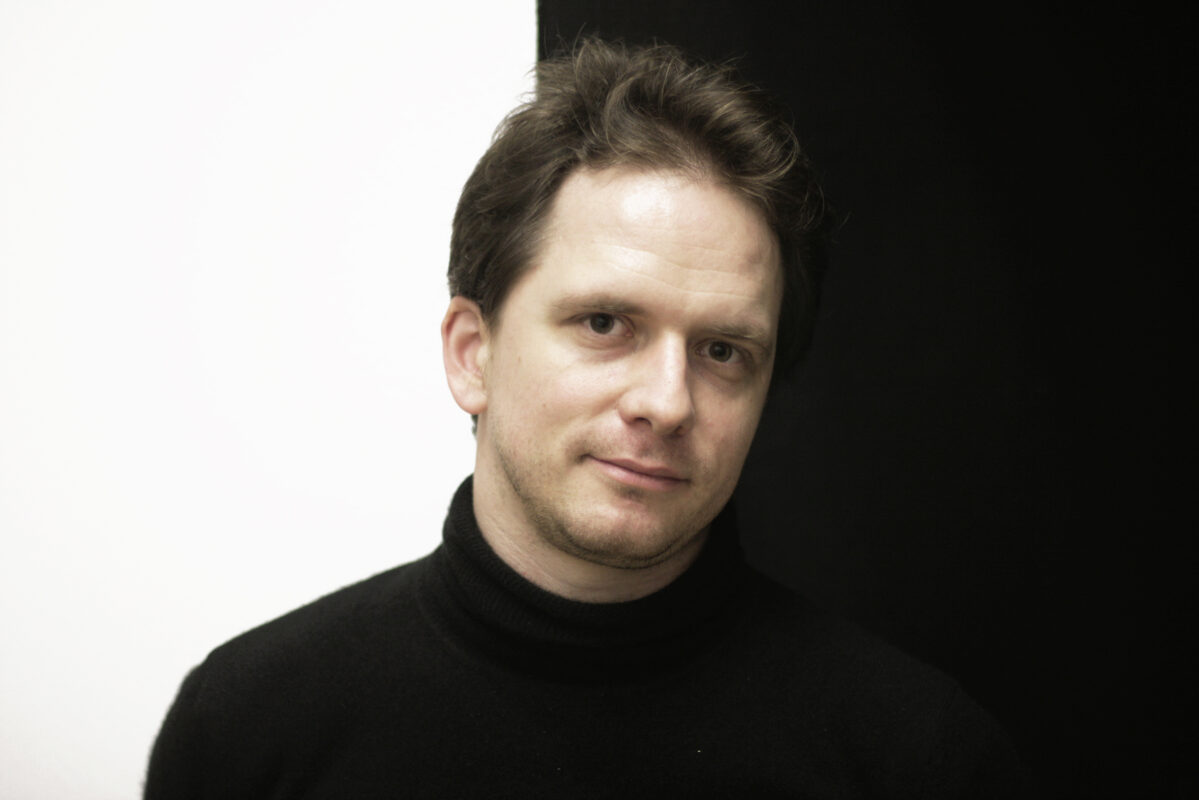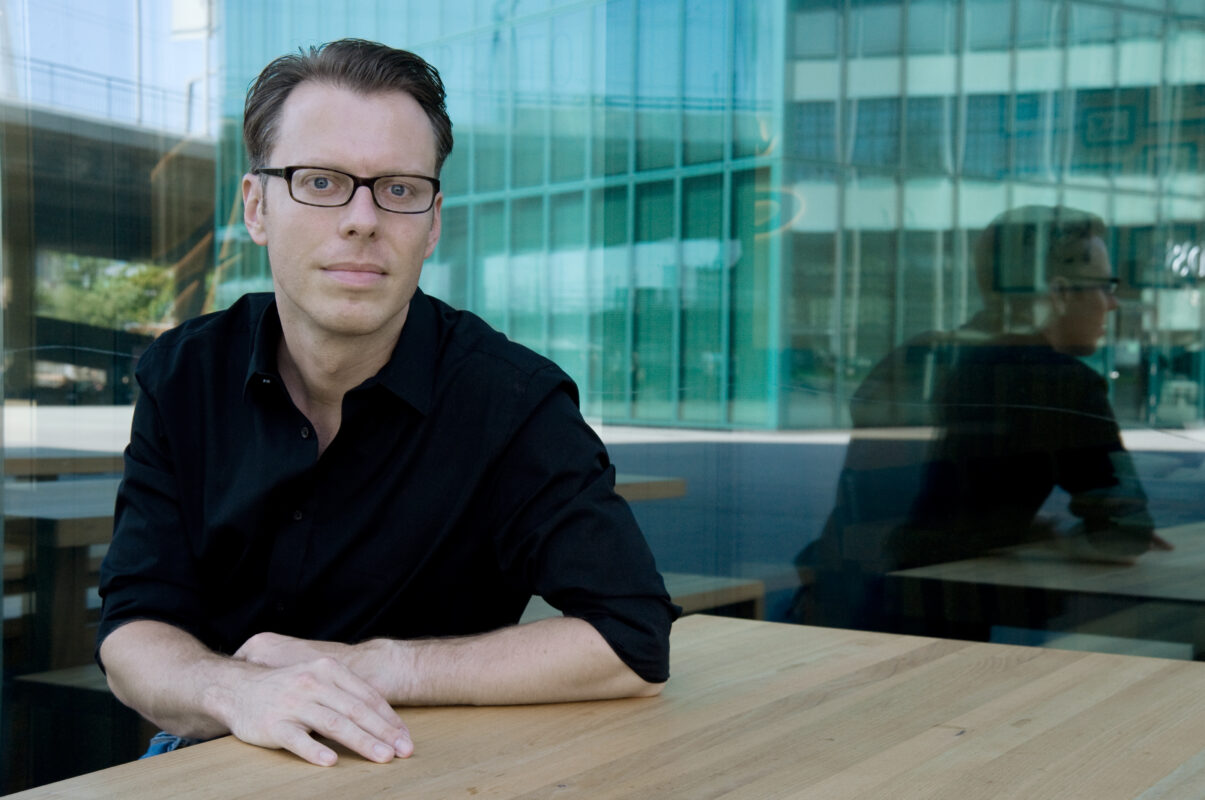René Gerber, Neuchâtel composer
110 years ago, René Gerber was born, a composer and director of the Neuchâtel Conservatory, but also an art lover - he founded a gallery. At the end of his life, he published "Les exigences de l'art", a book that sums up 60 years of reflections on the subject, sometimes severe, sometimes humorous, always imbued with great rigor.

René Gerber was born in Travers on June 29, 1908, and moved to Peseux in 1919, where his father, a native of Emmental, worked as a cabinetmaker. After obtaining a scientific baccalaureate in Neuchâtel, he entered the Faculty of Medicine in Zurich, where his uncle, a dentist, intended him to resume his practice. But his mind was elsewhere. The dental drill, concrete music before its time, hardly moved him at all. Musik für Orchester by Volkmar Andreae, which he heard at its premiere in 1929 at Zurich's Tonhalle, and whose concerts he regularly attended, while already composing (his 1st Concerto for harp and orchestra dates from 1931). He definitively chose music, entering the Zurich Conservatory where Volkmar Andreae taught him composition and Paul Müller counterpoint, and, in just 3 years, obtained his diploma in 1933.
Attracted more by the French spirit than by Germanic post-romanticism, he moved to Paris in 1934 to follow the rigorous and severe teaching of Paul Dukas and Nadia Boulanger at the Ecole Normale. The latter demanded that she receive regular harmony work from her pupils during the vacations, which she returned with her corrections.
At the same time, he trained with Robert Siohan, composer, choral conductor at the Opéra and teacher at the Conservatoire, and perfected his knowledge of wind instruments with Pierre Dupont, lieutenant-colonel, conductor of the Musique de la Garde Républicaine (who transcribed Ravel's Boléro for wind band, performed in the presence of the composer). That same year, he married Ruth Matthey-Doret, a native of La Brévine (Neuchâtel), a young pianist who, while her husband devoted himself to the science of composition, took lessons from Alfred Cortot and Marie Panthès. The couple remained close friends with the latter - a famous concert pianist of the time and 1st prizewinner at the Paris Conservatoire at the age of 14 - until her death in 1955.

René Gerber gives a moving account of his meeting with Maurice Ravel:
"In Paris in 1934, I went to visit Ravel, who was living with his brother Edouard in Levallois-Perret. He received me with a cat in his arms and invited me to follow him to his room. His speech was labored. At one point, he told me that he hadn't yet written any real Ravelian works! To which I replied that so far he had only left masterpieces. No, no," he continued, "but during my inactivity, I gathered within myself all the elements of my style, the style that will be that of my later works. From then on, he composed nothing until his death on December 28, 1937.
From 1940 to 1947, he taught music at Neuchâtel's Collège latin, and in the latter year became director of the city's Conservatoire de Musique, a post he held until 1951.
Around this time, with his friend Henri Schenk, he founded the Galerie Pro Arte, first in Peseux and then, from 1959, in Bevaix, where he lived until the end of his life.

In addition to the pleasure of seeing many paintings and meeting many painters, including the late François Gall (1912-1987), the gallery's exhibitions, some of which were devoted to Neuchâtel artists, gave him the material independence he needed to devote himself to composition. For it was a constant in René Gerber's life: he never pulled any punches to gain any advantage, distinction or facility whatsoever. In this attitude and in his work as a composer, he was greatly helped by the understanding and unfailing support of his wife Ruth, who became a piano teacher with many pupils.
In addition to creating music, he teaches composition and writes a book on the subject. Treatise on counterpointCounterpoint, properly understood, is the source of all discipline and liberation in musical writing". The Lausanne composer Julien-François Zbinden (now 101!), a dear friend, is his oldest pupil. The benevolent rigor with which he approached any musical work that was not his own encouraged and stimulated his pupils, while at the same time leading him to appreciate many scores by contemporary composers, including in particular those by his friend Richard Flury, who died before him.

In 1996, he was awarded the Prix de l'Institut neuchâtelois. In 2003, he published his "artistic testament" Les Exigences de l'art, the culmination of 60 years of reflection on art.
His work
René Gerber's output spans 70 years (1931-2001) and covers all genres: chamber music in the form of quartets and sonatas for almost all orchestral instruments; concertos for violin, piano, clarinet, harp, bassoon, English horn and trumpet; music for large orchestra; vocal works, including two operas. At the time of his death, on November 21, 2006, the catalog of his works comprised 233 pieces, many of them published (Pizzicato Verlag Helvetia and Lausanne-Musique Disques VDE-GALLO).
His writing, both tonal and modal with borrowings from polytonality, is in the French tradition so wonderfully represented by Debussy, Dukas, Ravel and Poulenc. The melodic themes are short and the discourse limpid and without overload, giving each instrument or group of instruments a specific role, often as soloist within the orchestra. This characteristic can no doubt be explained by the composer's "monophonic" perception, as he heard with only one ear (on the left side, he had no inner ear).
The aesthetics of his music fall into two categories. The first obeys an inner impulse: themes emerge and are then developed and shaped: this is a concerto, a sonata or a quartet. The second is based on an extramusical source: a landscape, an event, a character conditions the composition, giving it a particular aspect and a title: for example, thehe Moulin de la Galette, the Ecole de Fontainebleau, the Hours of France. For, as these titles suggest, he loves France, its culture and its terroir. A pilgrimage to a Ruelle de Saint-Sorlin (Ain), which he had known since his youth (his uncle was a printer in Lagnieu), and the name was given to a piano piece. He is considered "the most French of Swiss composers".
Created in 1990 by the composer and his wife, the René Gerber Foundation, thanks to the dedication and skill of Claude Delley, artistic director, and Olivier Buttex, director of the VDE-GALLO record label, has produced 21 CDs to date, while organizing or supporting numerous concerts in Switzerland and abroad.
A professional musician with a passion for all the arts, of which he possessed an encyclopedic knowledge, René Gerber tried his hand at figurative painting under the pseudonym of Martel, and, keen on prosody, wrote 150 Sonnets under the pseudonym of René Bourgogne.

For over 30 years, my wife and I have enjoyed a fruitful friendship with him, cultivated through travels and numerous evenings of lively discussion. The man is full of humor, and his quick wit never misses an opportunity to shine through. At an after-concert performance of his works, for example, he commented on his wife's receipt of a large bouquet of flowers: "What a sheaf without the r (air)! A pamphleteer well-versed in the practice of the quatrain, he mocks certain egos or castigates the indigence of minimalist art:
Distress in paradise
Brothers in religion, pray and groan!
for the Most High, despite his infinite wisdom
is currently struck by megalomania:
he thinks he's nothing less than Pierre Boulez!
Avant-garde
I never went to art school,
ignores El Greco, Shakespeare and Mozart...
but see my genius as my hand places
a black dot in the middle of a white surface!
The Requirements of Art
René Gerber's title sums up his conception of art. Some of the book's fundamentals are reported below.
Art is "indefinable in its essence, its affective and imaginative source". At the same time, however, it is "definable in its realization". As a result, a finished work requires from its creator, in addition to inspiration, a skill, a technique and a critical sense comparable to those required by science, and is therefore objectively analyzable.
The creative imagination, whatever the discipline, however fertile it may be, allows neither total freedom nor gratuitousness: "Art is not subject to any rules, the work of art is subject to a number of rules". A work only becomes a masterpiece if it satisfies four conditions: style, form, individuality and density. As form, for example, guarantees the unity of the work, it follows that random or informal music cannot claim to be a work of art.
In the art world, there are two kinds of protagonists: the creators, whether brilliant or mediocre, and the critics, who rarely create, demolish or praise, depending on their competence and sincerity. But often, a word from a great master is worth more than the prose of the critics. This is Leonardo da Vinci: "Art lives by constraint and dies by freedom", or Claude Debussy: "How much a work must be a masterpiece to withstand so many interpretations".
A widespread confusion is denounced: non-figurative painting, as it should be called, cannot be abstract, because abstraction, the artist's supreme faculty, can only be exercised on a figurative subject.
The many "ism" movements of the 20th century (Fauvism, Cubism, Futurism, Simultanism, Suprematism, Dadaism, Surrealism, Purism, Constructivism...) seek only to make art dependent on often reductive doctrines, while associations such as "painting full of musicality" or "colorful symphony" are gratuitous.
What are we to make of the "religious war" between composers of tonal music, attached to the principle of the tonic and dominant, and the proponents of atonal, twelve-tone, electroacoustic or concrete music, some of whom go so far as to sweep away the traditional heritage? Are the two worlds irreconcilable? René Gerber gives an original answer by distinguishing two sound arts. The first simply represents music, a tonal and therefore natural art, "bound by a discipline, subject to a syntax" and which finds its form within itself. The second is atonal, with no recourse to classical instruments, and is not bound by any grammar. "Informal in essence, it is only viable in association with another art form, such as cinema, which will give it form and meaning. "The great misconception of the followers of the second art is that they believe themselves to be the continuators of music, whose progression they see themselves as ensuring.
Through a detailed and systematic analysis of the artistic phenomenon, at times severe, at times humorous, always imbued with great rigor, the author demonstrates that one can be both creator and critic.
Jean-Jacques Perrenoud
... is Chairman of the René Gerber Foundation and a former professor at Geneva's Faculty of Medicine.
To find out more
CD, catalog of works, scores, books by René Gerber:
Claude Delley, artistic director of the foundation, chemin du Loclat 8, 2013 Colombier: cl.mt.delley@gmail.com
VDE-GALLO website for discography:
vdegallo.com/en/vde_composers/rene-gerber/
Website Julien-François Zbinden:
www.jfzbinden.ch/








